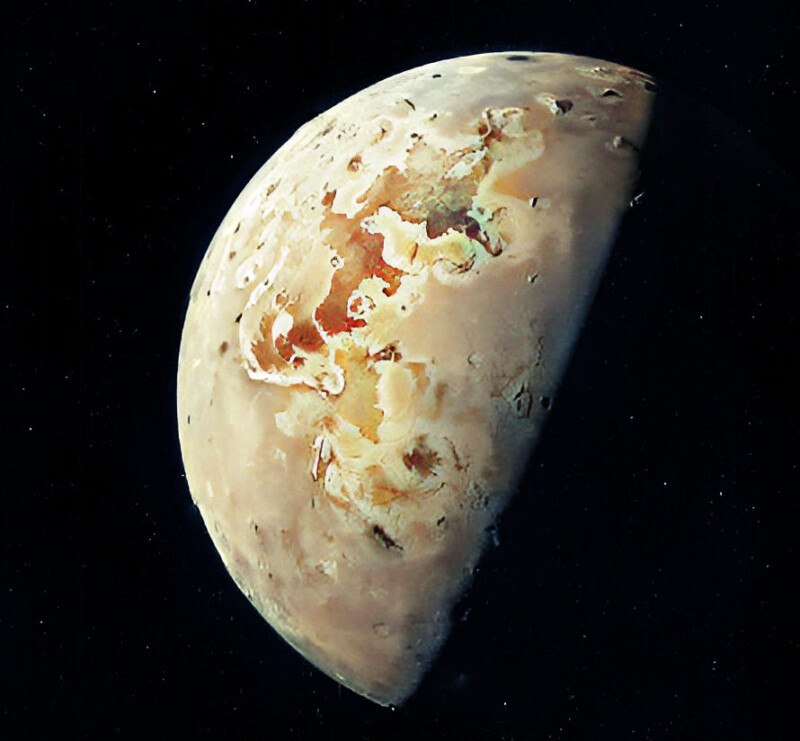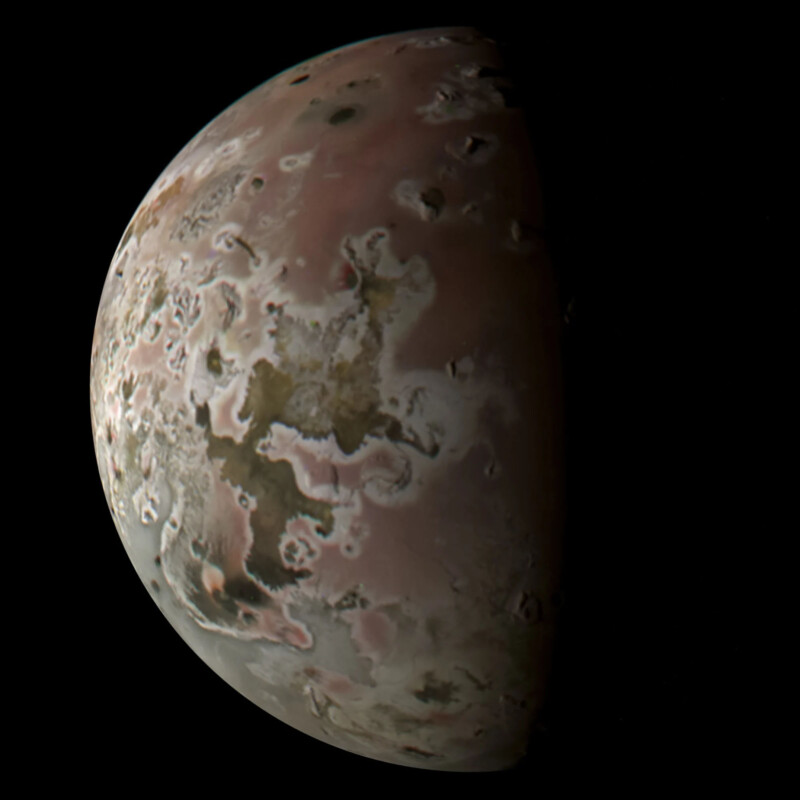New Images of Jupiter’s Moon Io are the ‘Best Ever’
![]()
NASA’s Juno spacecraft took its best-ever images of Jupiter’s moon Io after making a close pass on Sunday — just 7,235 miles.
Io is the most volcanically active world in the solar system with more than 400 active volcanoes on its surface, some of which are thought to be taller than Mount Everest.
The dark splotches indicate lava flows, shadows cast from the tall peaks, and even volcanic plumes that are bellowing out into space.
Time-lapse of @NASAJuno's encounter with Io over the weekend as seen by JunoCam. pic.twitter.com/kWrLxogL3h
— Jason Perry (@volcanopele) October 17, 2023
Io is slightly larger than Earth’s moon and one of 95 known moons that orbit Jupiter. But it is one of the four largest moons, known as the Galilean moons, in the Jovian system.


The Juno spacecraft is scheduled to make an even closer pass to Io in December and then again in January 2024.
“We’re marching closer and closer,” Scott Bolton, the Juno mission’s principal investigator, told Mashable earlier this year.
The extreme volcanic activity means that Io isn’t suitable for life to exist but other Jovian moons could be.

One of Jupiter’s other moons, Europa, could potentially harbor extraterrestrial life because scientists believe beneath its icy surface is a water ocean.
All of the images from the Juno spacecraft are taken with JunoCam, a visible-light camera with a field of view of 58 degrees. It has four filters; red, green, and, blue, that filter visible light. The fourth filter, a methane band, provides color imaging.
Originally, Juno’s mission was to investigate Jupiter but its mission was extended and expanded to include three of the four Galilean satellites and the gas giant’s rings.
Over the years, NASA’s Juno probe has captured some of the most beautiful photos of Jupiter (see below) which it has been orbiting since 2016.
![]()
The Juno mission was never scheduled to inspect Jupiter’s moons and only came about after NASA got an unexpected 42 extra passes of Jupiter which threw up an opportunity to snatch close glimpses of Jupiter’s moons.
Image credits: NASA